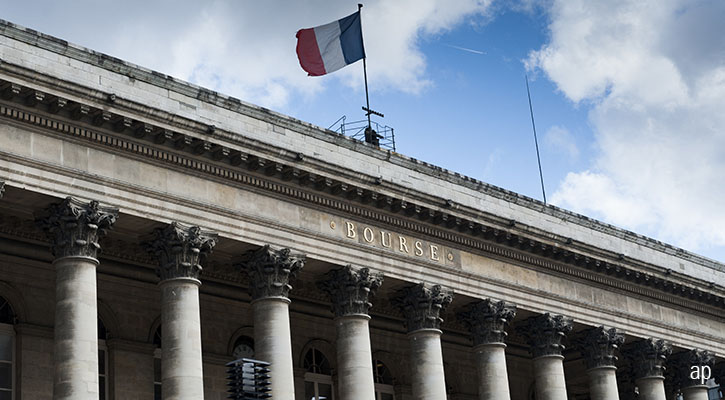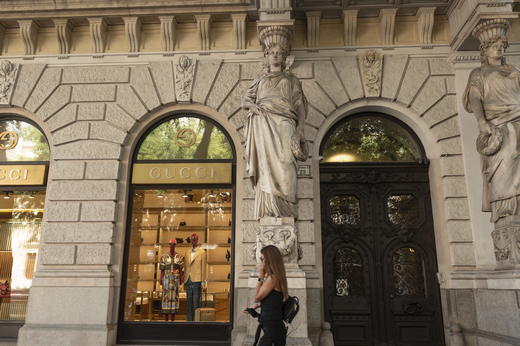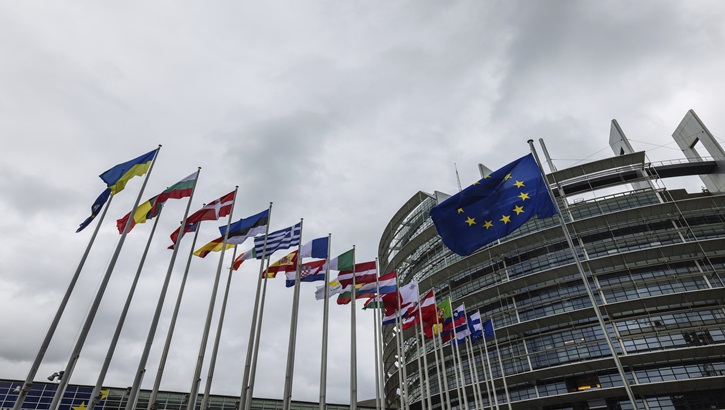
“Chaud devant” is the warning French waiters use to announce a hot coming dish to customers. And it could well apply to the French stock market.
With a 6% rebound so far this year, the Morningstar France index is having a solid start this year, after having outperformed Europe for a while now.
We have analysed the recent performance of the index to understand its drivers and if they look sustainable.
In 2022, the Morningstar France Index lost only 8.3% while Morningstar Global Markets declined by 13%. The year before, it jumped by 28%, on par with global equities (all performance figures are in euros).
Over the last 10 years, France is one of the best performing countries in Europe, losing only to Denmark, the Netherlands, Finland and Switzerland – all smaller and more concentrated markets.
For instance, the Morningstar Denmark index relies heavily on pharmaceutical company Novo Nordisk (NOVO B) which accounts for 46% of its performance.
The Morningstar Netherlands is highly dependent on ASML’s fate (31% of the index), while Nestle, Roche and Novartis account for 20.1%, 13.9% and 13.7% of Morningstar Switzerland respectively.
Global Leaders
While France has long been plagged with a number of structural issues – declining birth rate, low productivity, industrial decline, lack of medium-sized businesses, excessive political and state intervention – it is also home to a number of global leading players in a variety of industries.
This diversity is somewhat reflected in the CAC 40 index, although investors should probably look at broader indexes, such as the Morningstar France index, to get a better view at what the French stock market is made of.
At the end of last year, the constituents of the Morningstar France index reached a total market capitalization of € 2.45 trillion (£2.16 billion), close to the country’s GDP of €2.6 trillion (over the last 12 months).
Luxury Goods Lead the Way
One reason the Morningstar France index has been doing well is in part because luxury stocks have been outperforming and have gained a heavier weight in the index over the years.
At the end of 2022, LVMH (MC) represented 10.7% of the Morningstar index compared with 3.6% twelve years earlier. Hermes International’s (RMS) weight almost trebled to 3.02% from 1.01% in 2010.
Kering (KER), another luxury company, declined more sustantially last year, mainly to subpar performance form its Gucci brand. But its weight in the index has increased from 1.1% to 2.5% over the last 12 years.
Luxury’s increasing share of the index was accompanied by a couple the same move for a couple of defensive companies, such as pharma company Sanofi (SAN), L’Oreal (OR), glasses company EssilorLuxottica (EL), and food and drinks firms Pernod Ricard (RI) or Danone (BN).
This was also a reflection of their solid and profitable growth since the global financial crisis of 2008, and the result of higher valuation multiples fuelled by declining interest rates.
The cumulative net income of the three luxury companies went from €4.2 billion to €17.6 billion in 2021 and is expected to reach €28.1 billion in 2025, according to consensus estimates. Consumer defensive names saw their profits grow to €16 billion in 2021 from €11.1 billion in 2010.
Energy also did extremely well last year, with TotalEnergies (TTE) jumping 28%, as well as aerospace and defence stocks such as Safran (SAF) or Thales (HO), which gained 8.6% and 58.7% respectively.
Still Some Attractively Valued Companies Left
Many of the names which most contributed to recent outperformance of the French market today trade at a premium to their Morningstar fair value estimate. But many are still attractively valued according to Morningstar (see below table).
The median valuation multiple for the 142 constituents in the Morningstar France index is also low compared to history, trading at 12.5 times 2023 estimated earnings, according to consensus, compared with a 20 year median P/E ratio of 16x.
This discount is a reflection of low valuation multiples at a number of large caps: TotalEnergies, Sanofi, BNP Paribas (BNP), AXA (AXA), Engie (ENGI), Saint-Gobain (SGO), Capgemini (CAP) and Vinci (DG) currently trade at a discount to their historical valuation multiples.
Yet a couple of them should enjoy solid earnings growth in the coming years.
On average the Morningstar index constituents should see their earnings grow 7.7% a year until 2025, according to consensus data.
(This article was adapted from Morningstar France, the original version is here.)




























